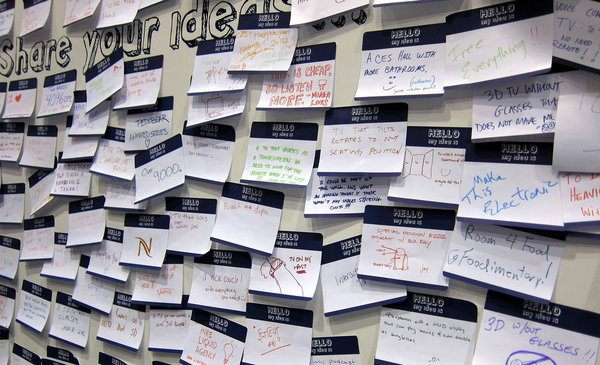Beyond achieving productivity or leaving a favorable impression in a creative pitch, sales meeting or ideation session, a key goal is that the ideas and information shared is retained. We know you must ‘know your audience’, but have you considered their learning styles?
Rita and Ken Dunn of St. Johns University have conducted 30 years of research on the learning styles of children and adults. They are able to show that students excel when allowed to learn in circumstances that support their preferred learning style.
They have identified five categories with reliable and valid instrumentation and a strong research base:
1. Environmental: bright versus dim light; sound present or absent; warm versus cool temperature; formal versus informal design.
2. Emotional: high versus low structure; low versus high level of persistence, motivation; and responsibility versus nonconformity.
3. Sociological: preference for learning alone; in pairs; with adults, peers, team, or varied.
4. Physiological: visual, tactual, or kinesthetic perceptual strengths; high versus low mobility; and time of day preferences.
5. Psychological: global versus analytic; impulsive versus reflective; cerebral dominance.
The Dunn’s identified three types of preferred information intake: visual, auditory, and kinesthetic & tactile. While many training and presentations depend on auditory communication, most people are not auditory learners. Adding tactile toys adds another dimension for some adults to better focus their attention.
Toys in the classroom/presentation/advertising pitch or ideation session create:
•A colorful, fun environment that is non-threatening
•Access to toys for kinesthetic and tactile learners that focus their attention by taking detailed notes or playing with objects,
•A focus for the adult learner to start conversations
I have used toys like slinky’s and stress balls for years in presentations and meetings with great success. I begin by placing these toys in the middle of the table prior to the meeting. I don’t discuss them in case someone asks.
Yes, the CEO always asks to keep the little red train.
Branding Strategy Insider is a service of The Blake Project: A strategic brand consultancy specializing in Brand Research, Brand Strategy, Brand Licensing and Brand Education





One comment
Luis
January 22, 2007 at 10:29 pm
I really enjoyed this post. Imagine if we applied the same concept of learning styles to our communications programs. A campaign could contain different messages for different learners in a given demographic. Just a thought.
P.S. Congrats! on getting on the WPNI blogroll.
Comments are closed.